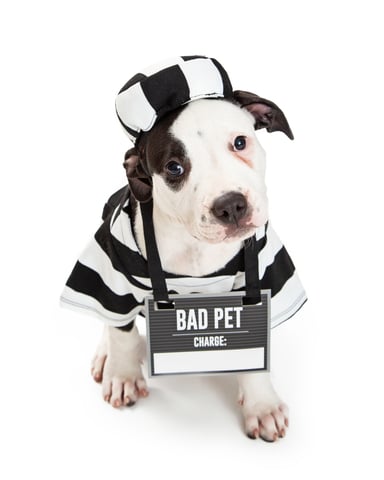Train an incompatible behavior ... shhhh.

A few weeks ago we had a new dog attend our Scent work class. This is a small class of five dogs, all of whom rest in crates between their turn to find the hidden scent object. When it was the “new dog’s” turn, several of the other dogs started barking. They recognized that they didn’t know him. I’ve always found this really interesting. A class of dogs becomes a unit very quickly. There isn’t this kind of barking the first week, or maybe even the second, but in a class of dogs attending week after week, if a new dog joins the class, before the other dogs even have a chance to smell the newcomer, many of the attendees will let us know, “Hey! New kid!!”
I don’t have an issue with my dogs barking, but many dog owners do. To quote from an email I received: I stopped attending a training class with my dog because he barked a lot and the classmates were distracted with this annoying barking. Any suggestions?
It’s not unusual for an untrained dog to bark when he first attends a class with other dogs. The dog is in an unfamiliar environment with many unfamiliar dogs and people. Barking is often caused by nervousness or anxiety, lack of socialization, fear and more.
Embarrassed and upset about their dog’s behavior, a normal human reaction is to try to stop the dog’s barking. Owners react in one of three ways: The most common approach is to try to soothe the dog by petting and saying, “It’s OK. It’s all right.” Or some owners will try to convey that the behavior is bad through scolding or even jerking on the dog’s collar. And finally, an owner may move the dog away from what is causing the dog to bark.
None of these work. Petting and trying to soothe the dog actually reinforces the behavior. Not understanding what the human is trying to convey, the message received by the dog is positive attention. As for scolding, that approach to punishment convinces the nervous or frightened dog that this definitely is not a good place to be. Please, let’s leave! And since fear-based barking is the dog’s attempt to increase the distance between himself and the other dogs, by pulling the dog away, the increased distance reinforces his barking.
So how should an owner handle a dog that is barking in a class situation? What the dog needs to learn is an “incompatible behavior”—a behavior that, when the dog is performing it, he cannot be performing the undesirable behavior. What’s incompatible with barking? Being quiet. If the dog is quiet, he is not barking.
In our classes, we have a class assistant help out, if possible. As long as the dog is not afraid of people, the assistant will simply take the dog’s leash and while the owner is listening to the Instructor, reward the dog for not barking, reinforcing quiet. This often works when the dog is barking our of initial nervousness.
It’s far better to train the incompatible behavior of quiet, and at the same time, desensitize the dog to whatever is causing his distress so that he will learn to be both comfortable, and quiet. If this isn’t enough to calm the dog, and help the owner learn how to deal with the dog’s behavior, there is likely another reason for the dog’s discomfort in the class environment.
When the dog isn’t responding quickly to the reinforcement of “quiet,” we will recommend that the student have a few lessons with one of our private trainers to properly acclimate and desensitize the dog to the environment and triggers that are causing him to bark uncontrollably.
Our ultimate goals are for the owner to learn how to train and reinforce “quiet behavior”, and that the student and dog successfully complete this training, having learned to be comfortable and responsive around other dogs.







